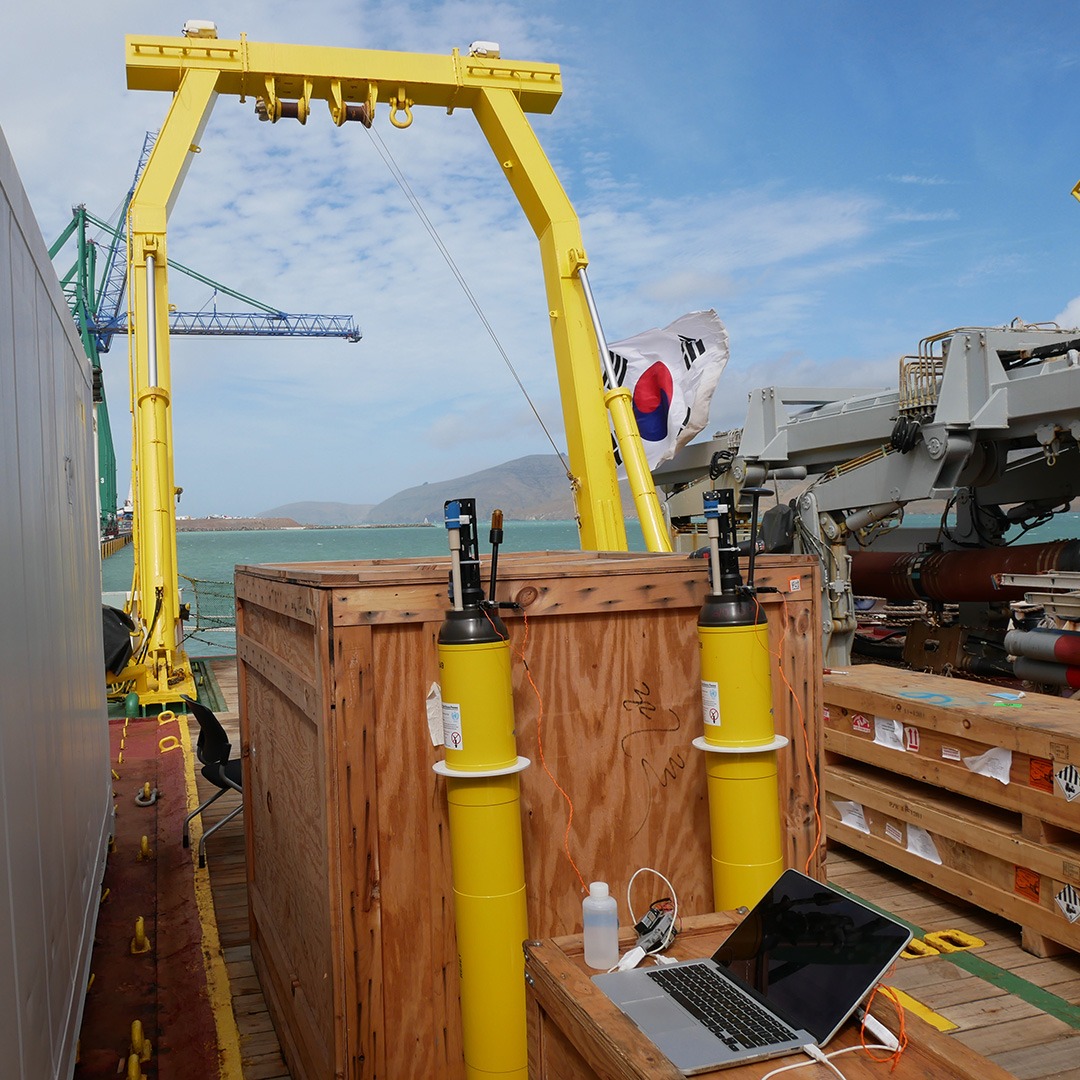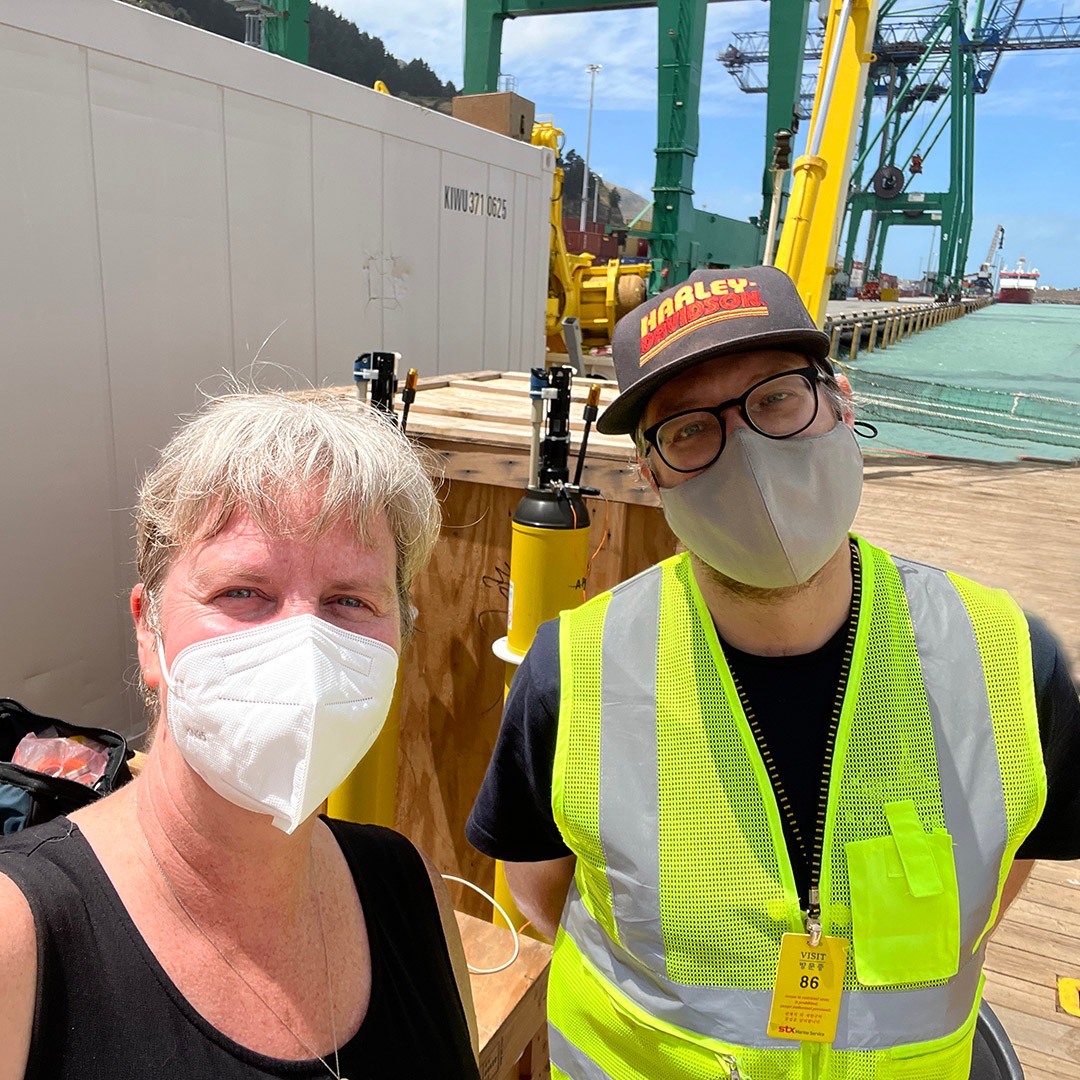Final Float Check in Lyttleton
Float Engineer Greg Brusseau checks out each float before we head out
Finally onboard the IBRV Araon and departing Lyttleton
Guest Blog by UW Engineer Greg Brusseau
Educators who were at the EARTH 2022 workshop in Seattle may recognize our esteemed float lab tour guide, Greg Brusseau! In addition to all of the work Greg does in the float lab at UW, he travels around the world 4-6 times a year to check out the floats before they are deployed (the lab team as a whole makes 10-12 trips per year, since the floats go onto so many different ships). We had a brief chance to chat while he was working hard to get all 10 of our floats checked out before we had to depart for Hobart to get fuel. Luckily, he’s “the best in the world,” (according to his colleague Rick Rupan) and was able to get it all done before we left. It’s crazy that Greg had to fly halfway around the world for one day of work, but it’s so important to make sure that the equipment that we’re sending out is all in working order! Read on to hear more from Greg:
Jan 4, 2023 – Lyttleton, New Zealand
I am a Research Scientist/Engineer with the Argo Float Lab at the University of Washington. Our team sent 10 Biogeochemical floats to be deployed off the IBRV Araon. These floats are autonomous profiling drifters, which sample the water column to a maximum depth of 2000 meters. The floats measure temperature, salinity, oxygen, pH, nitrate, and optical backscatter. Further details on the instruments, as well as the data collected by the floats, can be found at https://soccom.princeton.edu/ and/or https://www.go-bgc.org/.
My task aboard the IBRV Araon was to complete a final checkout of the floats before they are deployed. These instruments have a lifespan of 5 to 7 years and are not recovered. Because we will have no opportunity to service them after deployment, it is prudent to complete a final checkout. For the checkout I exercise every component of the float: I check to make sure every sensor is working correctly, I check the float’s communication through the Iridium satellite system, and I exercise the buoyancy engine. Because I never know what resources will be available to me onboard different ships, I have to be fully self-contained and prepared for anything.
I had a limited amount of time to complete the checkout of the floats due to the uncertainty of where and when the ship would be fueling. Fortunately, the floats were delivered on time, and I was able to get right to work. Under normal circumstances, each float takes about an hour to an hour and a half to check out, but I was able to work fast and shave some of that time off. It was a long day, but all the instruments checked out and worked properly. It was a pleasure to meet many people onboard the ship.

All set up to check each float before deployment on the deck of the IBRV Araon. Photo by Greg Brusseau

From Victoria and Seattle, Jenn and Greg meet again halfway around the world!
